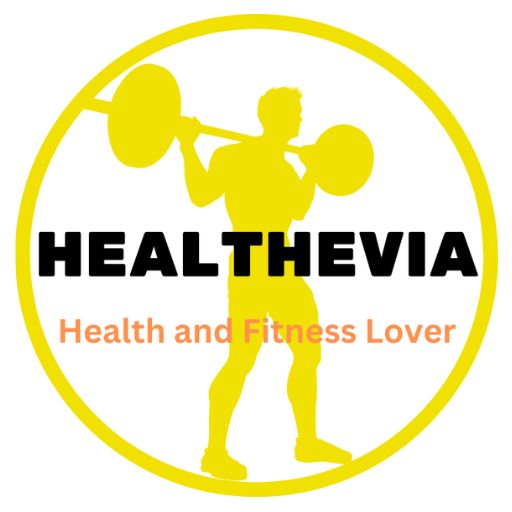Discover the Ketogenic Lifestyle: Benefits, Meal Plans, Recipes, and Tips for Success. Start your journey to better health today!
Welcome to “Keto Made Easy: A Beginner’s Guide to the Ketogenic Lifestyle”! If you’ve been curious about the ketogenic diet but aren’t sure where to start, you’re in the right place. The keto diet, a low-carb, high-fat eating plan, has gained immense popularity for its potential to transform health and facilitate weight loss.
In this guide, we will break down the essentials of the ketogenic lifestyle, making it easy for you to understand and implement.
The ketogenic diet works by shifting your body into a state of ketosis, where it burns fat for fuel instead of carbohydrates. This metabolic switch can lead to numerous health benefits, including improved mental clarity, better blood sugar control, and, of course, effective weight loss. But how exactly does one get started on this journey?
In the coming sections, we’ll explore the science behind ketosis, provide practical tips for meal planning, and share delicious keto recipes to keep you motivated. You’ll learn about essential keto-friendly foods, how to manage the initial adjustment period known as the “keto flu,” and strategies for maintaining this lifestyle long-term.
This guide is designed to be friendly, trustworthy, and research-based, ensuring that you have all the information you need to succeed. Whether you’re looking to lose weight, enhance your mental focus, or simply lead a healthier life, the ketogenic diet can be a game-changer. Let’s embark on this journey together and make keto easy for you.
How The Keto Diet Works

Understanding how the keto diet works is essential to making the most of this lifestyle. At its core, the ketogenic diet involves reducing carbohydrate intake and replacing it with healthy fats. This drastic reduction in carbs puts your body into a metabolic state called ketosis.
In ketosis, your body becomes incredibly efficient at burning fat for energy. It also turns fat into ketones in the liver, which can supply energy for the brain. Unlike other diets that rely heavily on carbohydrates, the keto diet encourages the consumption of fats. This switch can lead to sustained energy levels and reduce the energy crashes often associated with high-carb diets.
The process of reaching ketosis usually takes a few days to a week. During this time, your body exhausts its glycogen stores and begins to use fat as its primary fuel source. As your body adapts to this new energy source, you might experience the “keto flu” — a collection of symptoms like headaches, fatigue, and irritability. This is temporary and can be managed by staying hydrated and replenishing electrolytes.
One of the most compelling aspects of the ketogenic diet is its potential health benefits. Many people report improved mental clarity and focus once they reach ketosis. This is because ketones are a more stable energy source for the brain compared to glucose. Additionally, the keto diet can help regulate blood sugar levels, making it a valuable tool for those with insulin resistance or type 2 diabetes.
By understanding the mechanics of the ketogenic diet, you can better appreciate how it promotes fat loss and enhances overall well-being. In the next sections, we’ll delve deeper into meal planning, essential foods, and practical tips to help you navigate the keto lifestyle with ease.
Benefits Of The Keto Diet
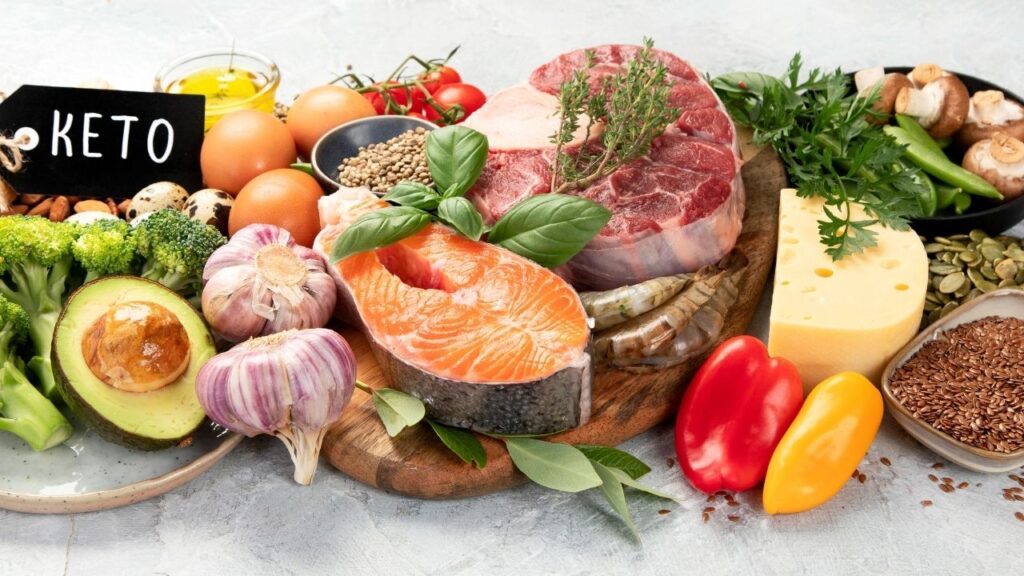
The ketogenic diet offers a variety of health benefits that extend beyond weight loss, making it an appealing option for many people. Here are some of the key advantages you can expect when following this lifestyle:
Weight Loss

One of the most well-known benefits of the keto diet is its effectiveness in promoting weight loss. By shifting your body into ketosis, you burn fat more efficiently, leading to significant reductions in body fat. The diet’s emphasis on healthy fats and proteins also helps you feel fuller for longer, reducing the temptation to snack on unhealthy foods.
Improved Mental Clarity And Focus

Many people experience enhanced cognitive function when they switch to a ketogenic diet. Ketones, the byproducts of fat breakdown in ketosis, are a more stable and efficient source of energy for the brain compared to glucose. This can result in improved mental clarity, better focus, and even enhanced memory.
Better Blood Sugar Control
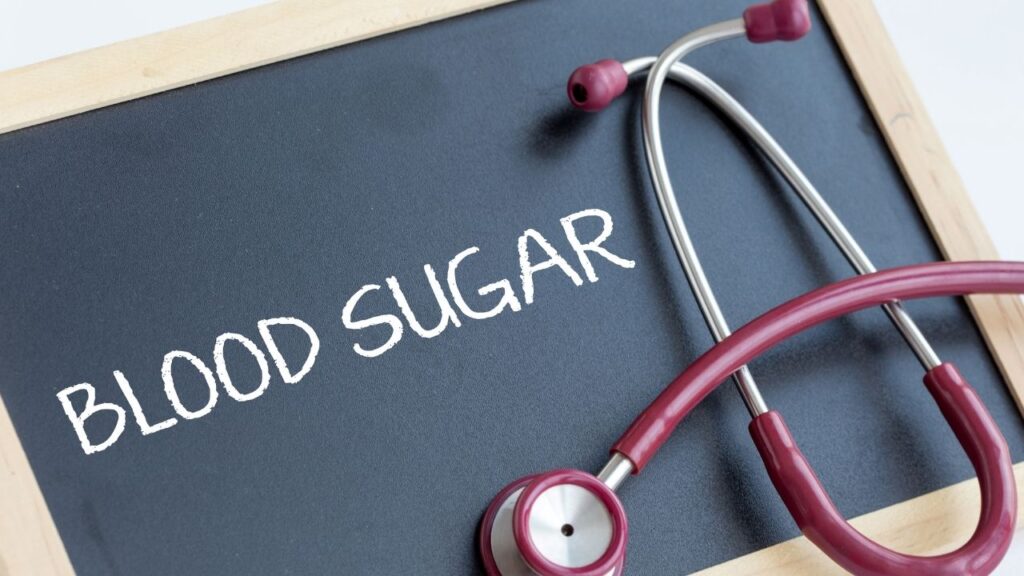
The ketogenic diet can be particularly beneficial for individuals with insulin resistance or type 2 diabetes. By minimizing carbohydrate intake, you reduce blood sugar spikes and improve insulin sensitivity. This can help stabilize blood sugar levels and reduce the need for diabetes medications.
Reduced Inflammation

Chronic inflammation is linked to various health issues, including heart disease, arthritis, and certain cancers. The keto diet’s focus on whole, unprocessed foods and healthy fats can help reduce inflammation in the body, promoting overall health and well-being.
Increased Energy Levels

Once your body adapts to burning fat for fuel, many people report having more sustained energy throughout the day. Unlike the energy crashes that come from consuming high-carb meals, the keto diet provides a more consistent energy source, helping you stay active and productive.
Appetite Suppression

Healthy fats and proteins are more satiating than carbohydrates, which means you’ll feel fuller for longer periods. This natural appetite suppression can make it easier to stick to the diet and avoid overeating.
Heart Health

Contrary to the misconception that a high-fat diet is bad for your heart, the keto diet can actually support cardiovascular health. By focusing on healthy fats such as avocados, nuts, and olive oil, and reducing the intake of sugar and refined carbs, the keto diet can help improve cholesterol levels.
Many followers of the keto diet report an increase in HDL (good) cholesterol and a decrease in LDL (bad) cholesterol, which are key indicators of heart health.
Epilepsy Management

The ketogenic diet was originally developed in the 1920s as a treatment for epilepsy, particularly in children who did not respond to conventional medications. Research shows that a high-fat, low-carb diet can reduce the frequency and severity of seizures.
Today, it remains a viable option for managing epilepsy and is being studied for its potential benefits in other neurological disorders.
Reduced Acne

Your diet can have a significant impact on your skin. Some studies suggest that reducing carb intake can lower insulin levels and, in turn, decrease the likelihood of acne outbreaks. The ketogenic diet’s focus on whole foods and healthy fats may help improve skin health by reducing inflammation and promoting a more stable blood sugar level.
Potential Cancer Risk Reduction

Emerging research suggests that the ketogenic diet may have potential benefits in cancer therapy. Since cancer cells thrive on glucose, reducing carbohydrate intake and inducing ketosis might slow down the growth of certain types of tumors.
While more studies are needed, the keto diet’s potential in cancer treatment is an exciting area of ongoing research.
Support for Polycystic Ovary Syndrome (PCOS)

PCOS is a hormonal disorder that can cause weight gain, insulin resistance, and infertility. The ketogenic diet can help manage symptoms of PCOS by improving insulin sensitivity, promoting weight loss, and regulating hormone levels. Many women with PCOS have found relief through the keto diet, experiencing improved menstrual regularity and fertility.
Enhanced Endurance and Physical Performance

For athletes and fitness enthusiasts, the keto diet can be a game-changer. By optimizing fat as the primary fuel source, the body becomes more efficient at burning fat during prolonged exercise.
This can lead to enhanced endurance, reduced fatigue, and improved physical performance. The steady energy supply from ketones can be particularly beneficial for endurance sports like running, cycling, and swimming.
Improved Sleep

Some followers of the ketogenic diet report better sleep quality. This could be due to the diet’s ability to stabilize blood sugar levels and reduce the intake of sleep-disrupting sugars and caffeine. Better sleep can contribute to overall well-being and improved cognitive function.
These additional benefits highlight the wide-ranging positive effects of the ketogenic lifestyle. Next, we’ll delve into practical steps for getting started on the keto diet, ensuring you have all the tools and knowledge you need to succeed.
Getting Started With Keto

Embarking on a ketogenic lifestyle can be both exciting and challenging. To ensure a smooth transition and set yourself up for success, follow these essential steps:
Setting Realistic Goals
Before you begin, it’s important to set realistic and achievable goals. Whether you’re aiming for weight loss, improved mental clarity, or better overall health, having clear objectives will help you stay motivated. Remember, the keto diet is a long-term lifestyle change, not a quick fix. Take the time to understand your goals and be patient with your progress.
Calculating Your Macros
The keto diet requires a specific balance of macronutrients: high fat, moderate protein, and very low carbohydrates. To get started, you’ll need to calculate your daily macronutrient needs.
There are many online calculators that can help you determine the right amounts based on your age, weight, height, activity level, and health goals. Typically, a keto diet consists of about 70-75% fat, 20-25% protein, and 5-10% carbohydrates.
Stocking Up on Essential Keto Foods
To make the transition easier, stock your kitchen with keto-friendly foods. Focus on whole, unprocessed foods such as:
Avocados, olive oil, coconut oil, butter, ghee, and nuts.
Meat, poultry, fish, eggs, and plant-based proteins like tofu and tempeh.
Leafy greens, broccoli, cauliflower, zucchini, and bell peppers.
Full-fat cheese, cream, and yogurt (if tolerated).
Water, herbal tea, and coffee (without sugar).
Planning Your Meals
Meal planning is crucial for staying on track with the keto diet. Start by creating a weekly meal plan that includes breakfast, lunch, dinner, and snacks. Look for simple and delicious keto recipes to keep your meals varied and satisfying. Batch cooking and meal prepping can save time and help you avoid the temptation of non-keto foods.
Managing the Keto Flu
As your body adapts to burning fat for fuel, you may experience symptoms known as the “keto flu.” These can include headaches, fatigue, irritability, and nausea. To mitigate these symptoms:
Drink plenty of water throughout the day.
Increase your intake of sodium, potassium, and magnesium through foods or supplements.
Ensure you’re getting sufficient sleep to help your body adjust.
Monitoring Your Progress
Keeping track of your progress can help you stay motivated and make necessary adjustments. Regularly check your weight, measurements, and how you feel overall. Many people find it helpful to keep a food diary or use apps to monitor their macronutrient intake and track their progress.
By following these steps, you’ll be well-prepared to start your ketogenic journey. In the next section, we’ll provide a sample meal plan and some easy keto recipes to help you kickstart your new lifestyle.
Keto Meal Plan
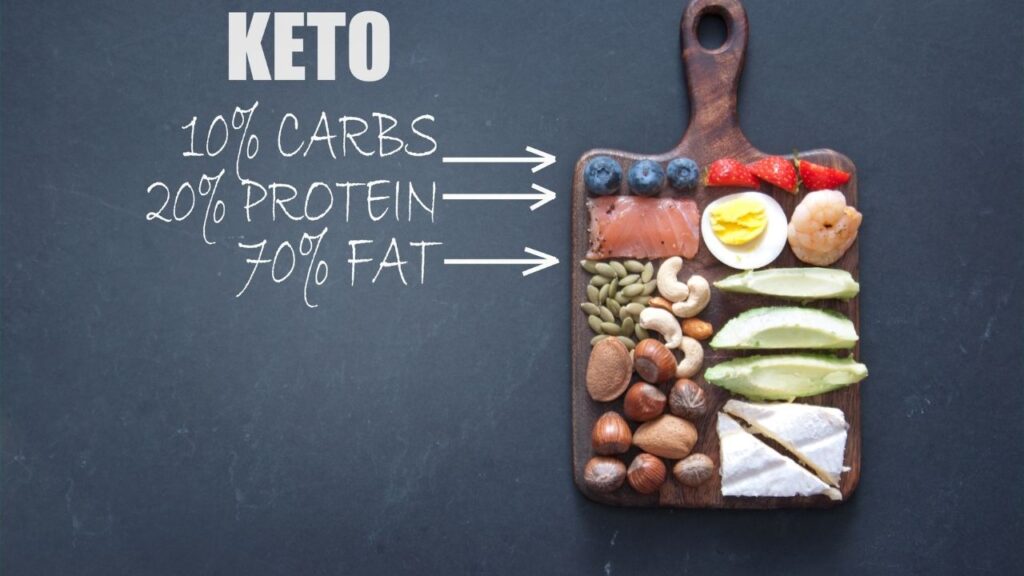
Breakfast
Keto Avocado and Egg Breakfast Bowl
Avocado, eggs, spinach, cherry tomatoes, olive oil, salt, and pepper.
Slice the avocado and fill with scrambled eggs cooked with spinach and cherry tomatoes. Drizzle with olive oil and season with salt and pepper.
Lunch
Grilled Chicken Caesar Salad
Grilled chicken breast, romaine lettuce, Caesar dressing (made with olive oil and anchovies), Parmesan cheese, and bacon bits.
Toss together grilled chicken, romaine lettuce, Caesar dressing, Parmesan cheese, and bacon bits.
Dinner
Creamy Garlic Parmesan Tuscan Chicken
Chicken breasts, garlic, spinach, sun-dried tomatoes, heavy cream, Parmesan cheese, olive oil, salt, and pepper.
Sauté chicken breasts in olive oil, then add garlic, sun-dried tomatoes, and spinach. Pour in heavy cream and Parmesan cheese, simmer until the sauce thickens.
Snack
Keto Fat Bombs
Coconut oil, cocoa powder, almond butter, and stevia.
Mix coconut oil, cocoa powder, almond butter, and stevia, then freeze until solid.
Easy Keto Recipes
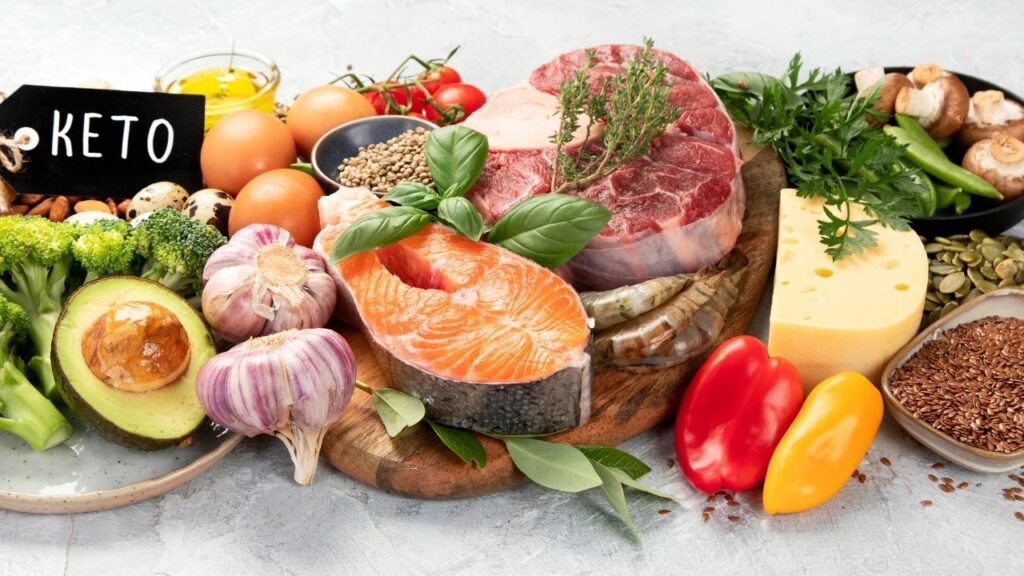
Keto Avocado and Egg Breakfast Bowl
Ingredients
- 1 ripe avocado
- 2 eggs
- Handful of spinach
- 4-5 cherry tomatoes, halved
- 1 tbsp olive oil
- Salt and pepper to taste
Instructions
- Cut the avocado in half and remove the pit.
- Scoop out a bit of the avocado flesh to create more space for the eggs.
- Crack an egg into each avocado half.
- In a skillet, heat olive oil over medium heat.
- Add spinach and cherry tomatoes, cook until spinach is wilted and tomatoes are softened.
- Place the avocado halves with eggs in the skillet, cover, and cook until eggs are done to your liking.
- Season with salt and pepper, and enjoy your keto avocado and egg breakfast bowl!
Grilled Chicken Caesar Salad
Ingredients
- 1 grilled chicken breast, sliced
- 2 cups romaine lettuce, chopped
- 2 tbsp Caesar dressing (made with olive oil and anchovies)
- 1 tbsp Parmesan cheese, grated
- 2 tbsp bacon bits
Instructions
- In a large bowl, combine grilled chicken breast, romaine lettuce, Caesar dressing, Parmesan cheese, and bacon bits.
- Toss well until everything is evenly coated with the dressing.
- Serve immediately and enjoy your delicious grilled chicken Caesar salad!
Creamy Garlic Parmesan Tuscan Chicken
Ingredients
- 2 chicken breasts, boneless and skinless
- 2 cloves garlic, minced
- 1 cup spinach
- 1/2 cup sun-dried tomatoes, chopped
- 1 cup heavy cream
- 1/2 cup Parmesan cheese, grated
- 2 tbsp olive oil
- Salt and pepper to taste
Instructions
- Season chicken breasts with salt and pepper.
- In a large skillet, heat olive oil over medium-high heat.
- Add chicken breasts and cook until browned and cooked through, about 6-7 minutes per side.
- Remove chicken from skillet and set aside.
- In the same skillet, add minced garlic and cook until fragrant, about 1 minute.
- Add spinach and sun-dried tomatoes, cook until spinach is wilted.
- Stir in heavy cream and Parmesan cheese, bring to a simmer.
- Return chicken to skillet and simmer until the sauce thickens and chicken is heated through.
- Serve immediately and enjoy your creamy garlic Parmesan Tuscan chicken!
Common Challenges and How to Overcome Them

While the ketogenic diet offers many benefits, it also comes with its own set of challenges. Here are some common issues you may encounter on the keto diet and practical tips for overcoming them:
Keto Flu
Issue
During the initial transition to ketosis, some people experience symptoms like headaches, fatigue, irritability, and dizziness, collectively known as the keto flu.
Solution
Drink plenty of water to help flush out toxins and support your body’s adjustment.
Increase your intake of sodium, potassium, and magnesium to replenish electrolytes lost during the keto flu. This can be achieved through foods like leafy greens, avocados, and nuts, or by using electrolyte supplements.
Ease into the keto diet gradually, reducing carb intake over a week or two rather than drastically cutting carbs all at once.
Cravings and Hunger
Issue
Adjusting to a low-carb diet can lead to cravings, especially for sugary and starchy foods, and hunger between meals.
Solution
Include plenty of healthy fats in your meals to increase satiety. Avocados, nuts, seeds, and olive oil are great choices.
Ensure you’re consuming an adequate amount of protein to support muscle maintenance and control hunger.
Keep keto-friendly snacks on hand, such as cheese, nuts, and keto fat bombs, to curb cravings between meals.
Social Situations and Eating Out
Issue
Social gatherings and dining out can present challenges when adhering to the keto diet, as many traditional foods are high in carbs.
Solution
Check the menu beforehand and look for keto-friendly options. Most restaurants are willing to accommodate dietary preferences.
Don’t hesitate to ask for substitutions or modifications to make a dish keto-friendly. For example, ask for a salad instead of fries, or request a burger without the bun.
Choose dishes that are centered around protein and non-starchy vegetables, and ask for sauces and dressings on the side.
Lack of Variety
Issue
It can be easy to fall into a rut of eating the same foods over and over again on the keto diet, leading to boredom and potential nutrient deficiencies.
Solution
Experiment with different keto recipes and try new ingredients to keep your meals interesting and varied.
Use herbs, spices, and seasonings to add flavor to your meals without adding carbs. Fresh herbs and citrus can brighten up any dish.
Get creative with keto-friendly swaps for your favorite high-carb foods. For example, use cauliflower rice instead of regular rice, or zucchini noodles instead of pasta.
Digestive Issues
Issue
Some people may experience digestive issues when starting the keto diet, such as constipation or diarrhea.
Solution
Include fiber-rich vegetables like broccoli, spinach, and kale in your meals to support digestive health.
Drink plenty of water to help move fiber through your digestive system and prevent constipation.
Ensure you’re consuming a variety of healthy fats to support overall digestive function.
Plateauing Weight Loss
Issue
After an initial period of rapid weight loss, some people may experience a plateau where weight loss slows down or stops altogether.
Solution
Double-check your macronutrient intake to ensure you’re still in ketosis and consuming the correct ratios of fats, proteins, and carbs.
If you’ve been losing weight steadily and then hit a plateau, consider adjusting your caloric intake slightly downward to continue seeing results.
Try intermittent fasting, which can help kickstart weight loss and break through plateaus by increasing fat burning during fasting periods.
Feeling Restricted
Issue
Some people may feel restricted by the limitations of the keto diet, especially in social settings or when craving certain foods.
Solution
Remember that there are many delicious and satisfying keto-friendly foods and recipes to explore.
Allow yourself occasional treats or “cheat meals” within reason to satisfy cravings, but be mindful of how they may affect your progress.
Shift your focus from what you can’t have to what you can enjoy that promotes your health and well-being.
Tips for Long-Term Success on the Keto Diet
Achieving long-term success on the ketogenic diet involves more than just following a meal plan. It requires adopting a sustainable lifestyle that supports your health goals. Here are some tips to help you maintain your progress and thrive on the keto diet:
Maintain a Balanced Diet
While the keto diet emphasizes fats and restricts carbohydrates, it’s important to maintain a balanced and varied diet. Include a wide range of keto-friendly foods to ensure you’re getting all the essential nutrients your body needs. Focus on whole, unprocessed foods like vegetables, nuts, seeds, and healthy fats to support overall health.
Incorporate Regular Exercise
Physical activity is important for overall health and can enhance the benefits of the keto diet. Incorporate both aerobic exercise (like walking, jogging, or cycling) and resistance training (like weightlifting or bodyweight exercises) to support muscle maintenance, improve cardiovascular health, and enhance overall well-being.
Monitor Your Progress
Keep track of your progress by regularly weighing yourself, taking measurements, and monitoring how you feel both physically and mentally. This will help you stay motivated and make adjustments to your diet and exercise routine as needed.
Practice Mindful Eating
Be mindful of your hunger and satiety cues when eating. Focus on eating slowly, savoring each bite, and paying attention to how different foods make you feel. This can help prevent overeating and promote a healthy relationship with food.
Stay Hydrated
Proper hydration is essential for overall health and can help alleviate symptoms of the keto flu. Drink plenty of water throughout the day, and consider adding electrolytes to your water or consuming electrolyte-rich foods like leafy greens and avocados.
Get Sufficient Sleep
Quality sleep is crucial for overall health and well-being. Aim for 7-9 hours of sleep per night to support optimal physical and mental function. Poor sleep can disrupt hunger hormones and make it more challenging to stick to your diet plan.
Manage Stress
Chronic stress can affect your metabolism and make it harder to lose weight. Practice stress-reducing techniques such as mindfulness meditation, yoga, deep breathing exercises, or engaging in hobbies you enjoy. Finding healthy ways to manage stress can support your overall health and make it easier to maintain your keto lifestyle.
Be Flexible and Adaptable
Life is unpredictable, and there will be times when you may need to adjust your diet or exercise routine. Be flexible and adaptable in your approach to the keto diet, and don’t be too hard on yourself if you occasionally deviate from your plan. Focus on progress over perfection.
Seek Support
Joining a community or finding a support system can be invaluable on your keto journey. Look for online forums, social media groups, or local meetups where you can connect with others who are following the keto diet. Sharing experiences, tips, and recipes can provide motivation and encouragement.
Consult with a Healthcare Professional
If you have any medical conditions or concerns about starting the keto diet, consult with a healthcare professional or a registered dietitian. They can provide personalized advice, monitor your progress, and help ensure you’re meeting your nutritional needs while following the keto diet.
Conclusion
The ketogenic diet can be a powerful tool for weight loss, improved health, and enhanced well-being when followed correctly and with consideration for individual needs.
By understanding the principles of the keto diet, incorporating practical tips for success, and seeking guidance from healthcare professionals as needed, you can embark on a successful keto journey. Embrace the variety of delicious keto-friendly foods, stay mindful of your body’s signals, and enjoy the many benefits of a ketogenic lifestyle.
In case you have any more questions or need further guidance on your keto journey, feel free to reach out to us. We’re here to support you every step of the way.
Frequently Asked Questions About the Keto Diet
Yes, the ketogenic diet is generally considered safe for most people when followed correctly. However, it may not be suitable for individuals with certain medical conditions, such as pancreatitis, liver disease, or disorders of fat metabolism. It’s important to consult with a healthcare professional before starting the keto diet, especially if you have any underlying health concerns.
The keto diet focuses on high-fat, moderate-protein, and very-low-carbohydrate foods. Some examples of keto-friendly foods include:
- Healthy fats: Avocados, nuts, seeds, olive oil, coconut oil, butter, ghee.
- Proteins: Meat, poultry, fish, eggs.
- Low-carb vegetables: Leafy greens (spinach, kale, lettuce), cauliflower, broccoli, zucchini.
- Dairy: Full-fat cheese, cream, yogurt (if tolerated).
- Beverages: Water, herbal tea, coffee (without sugar).
Foods to avoid on the keto diet include:
- High-carb foods: Bread, pasta, rice, potatoes, grains, sugary foods.
- Fruits: Most fruits are high in carbs and should be limited.
- Legumes: Beans, lentils, chickpeas.
- Sugary beverages: Soda, juice, sweetened drinks.
- Processed foods: Chips, crackers, cookies, and other snacks with high carbs.
You can determine if you’re in ketosis by testing for ketones in your blood, urine, or breath. Ketosis is typically achieved within 2-4 days of following a strict ketogenic diet. Common signs of ketosis include increased thirst, dry mouth, decreased appetite, and increased urination.
Some people may experience initial side effects when starting the keto diet, often referred to as the “keto flu.” Symptoms may include headache, fatigue, dizziness, irritability, and constipation. These symptoms are usually temporary and can be alleviated by staying hydrated, replenishing electrolytes, and allowing time for your body to adjust to ketosis.
Alcohol can be consumed in moderation on the keto diet, but it’s important to choose low-carb options. Hard liquors like vodka, whiskey, and tequila are low in carbs and can be mixed with zero-carb mixers like soda water or diet soda. Beer and sweetened cocktails should be avoided due to their high carb content.
The keto diet has been studied for its potential benefits in endurance athletes and those involved in high-intensity exercise. While some athletes report improved endurance and faster recovery on a ketogenic diet, others may find it challenging to perform at their best without sufficient carbohydrates. It’s essential to experiment and see how your body responds to keto if you’re an athlete, and consider targeted ketogenic diets or cyclical ketogenic diets.
Weight loss on the keto diet can vary depending on individual factors such as starting weight, metabolic rate, and adherence to the diet. Many people experience rapid weight loss in the first few weeks due to reduced water retention and fat loss. On average, a sustainable weight loss of 1-2 pounds per week is considered healthy.
The duration of the keto diet can vary depending on your health goals and how your body responds to the diet. Some people follow the keto diet for short periods to achieve specific goals, while others adopt it as a long-term lifestyle. It’s essential to listen to your body, monitor your health, and make adjustments as needed.
Yes, it’s possible to follow a vegetarian or vegan keto diet by focusing on plant-based sources of fats and proteins. Healthy fats such as avocados, coconut oil, and nuts can provide the necessary fat intake, while protein sources like tofu, tempeh, and seitan can be included in moderation. Green leafy vegetables and low-carb fruits like berries can also be part of a vegetarian or vegan keto diet.
